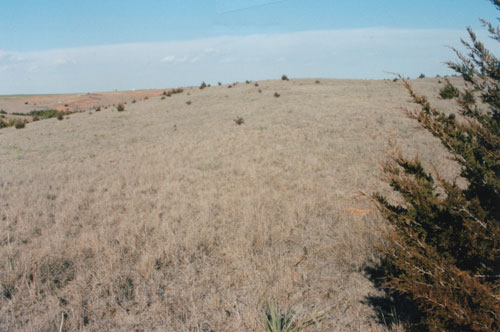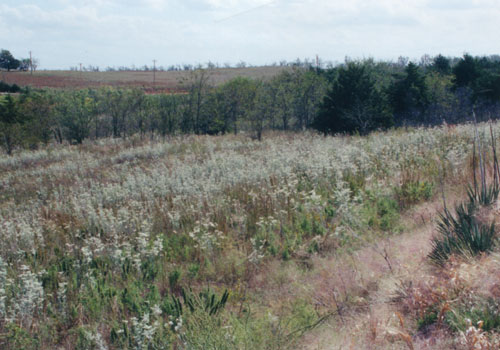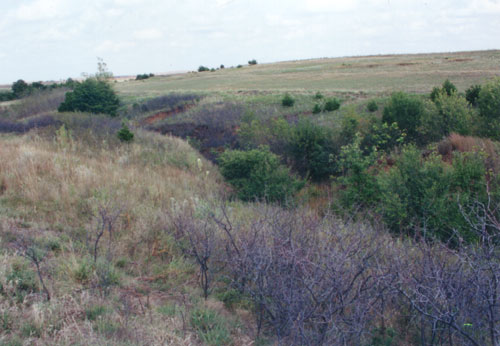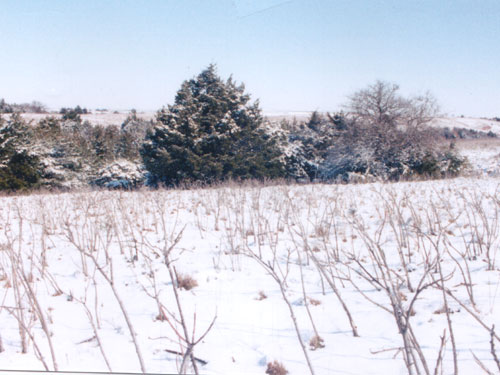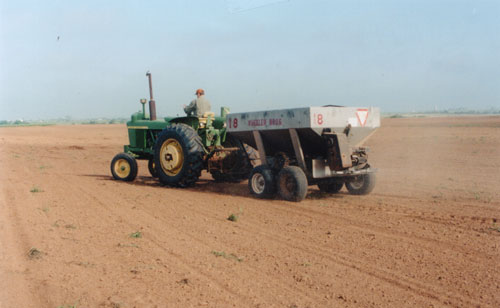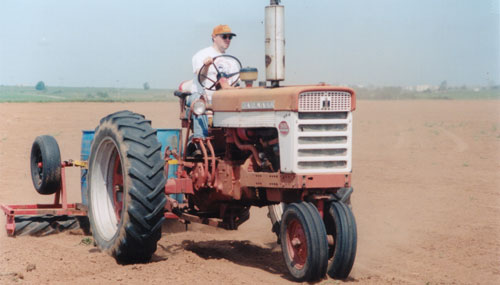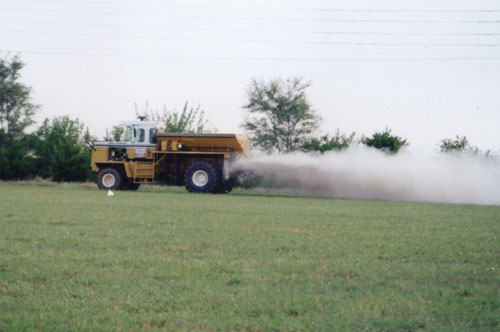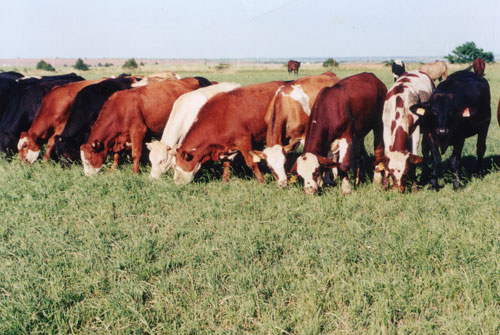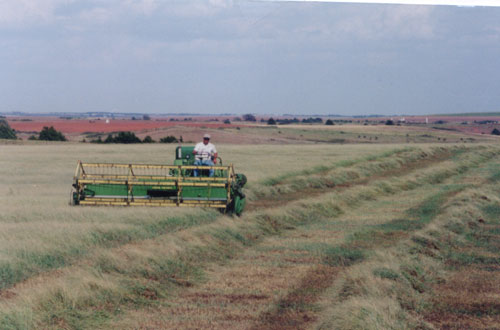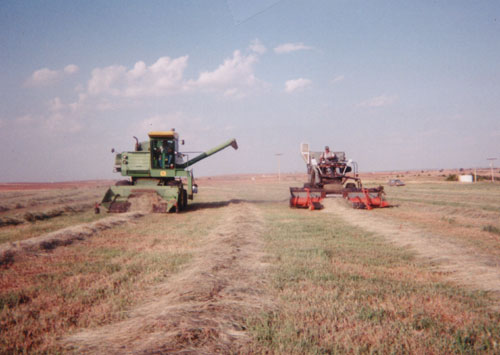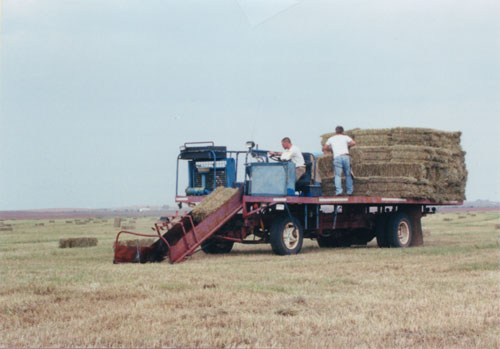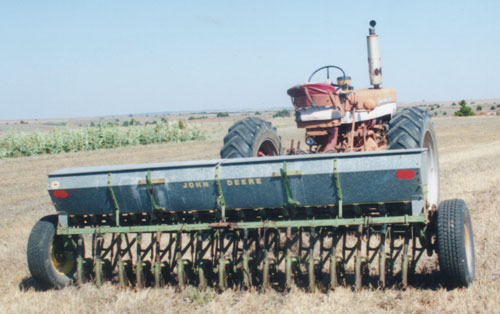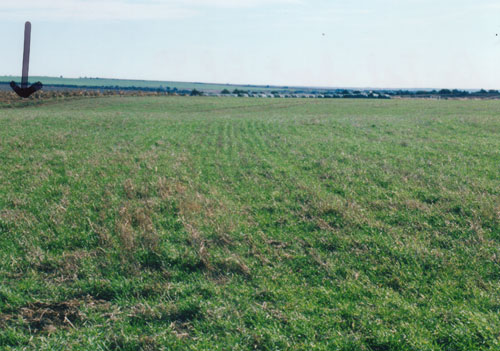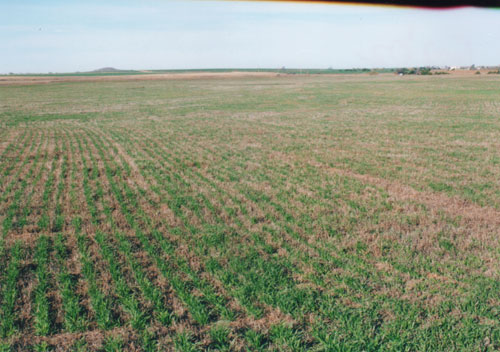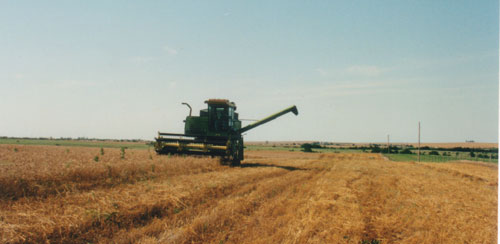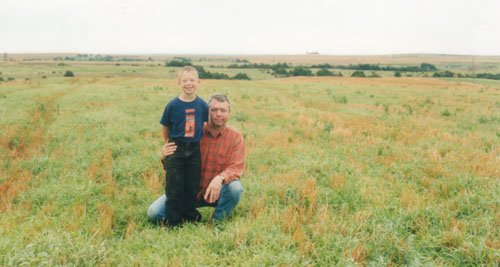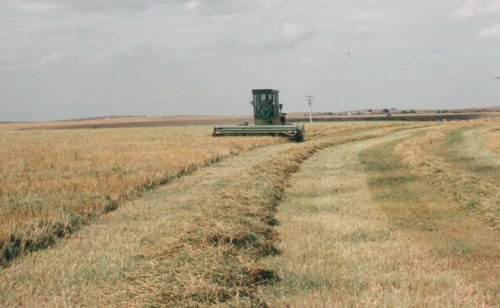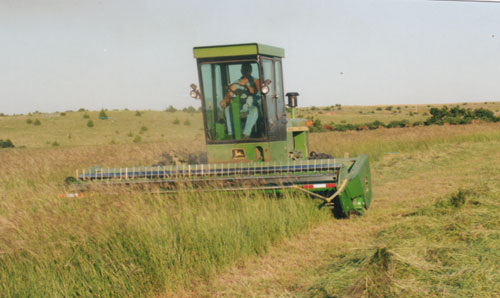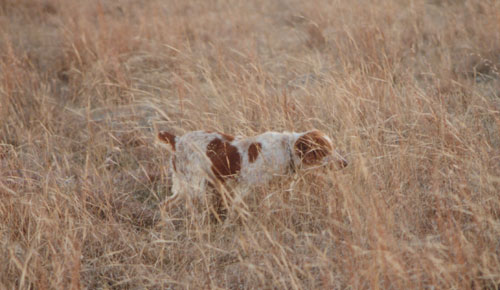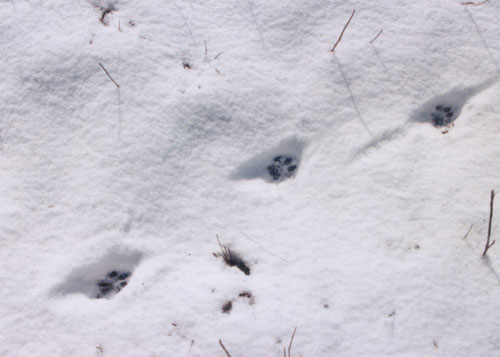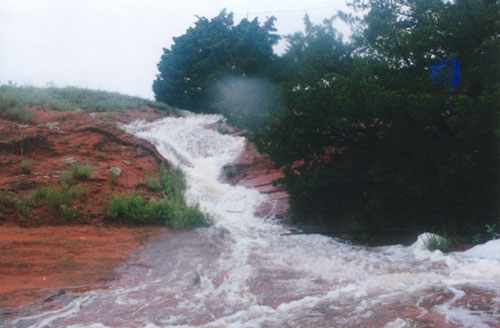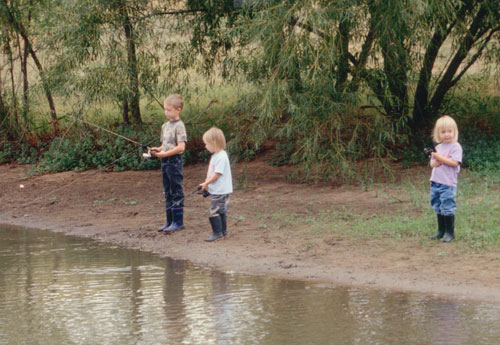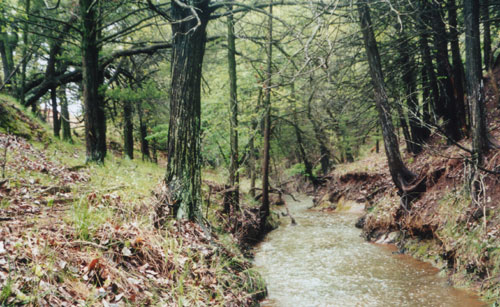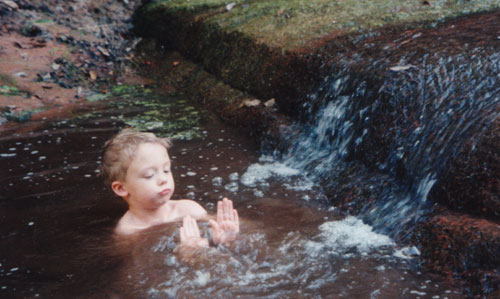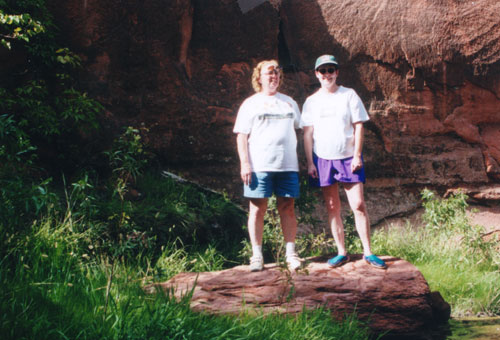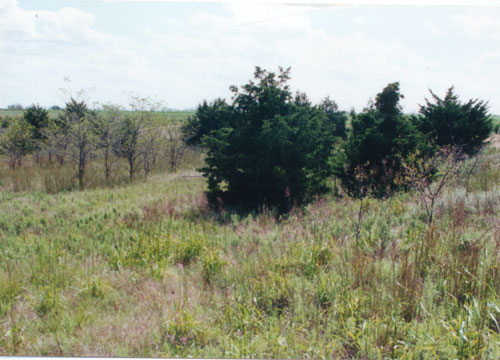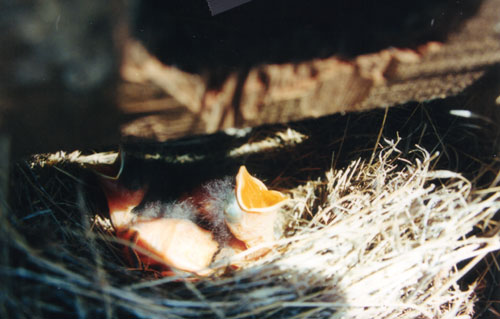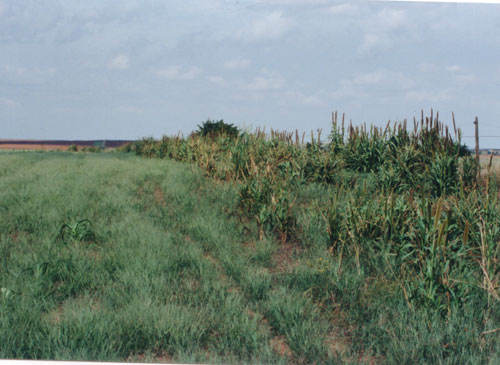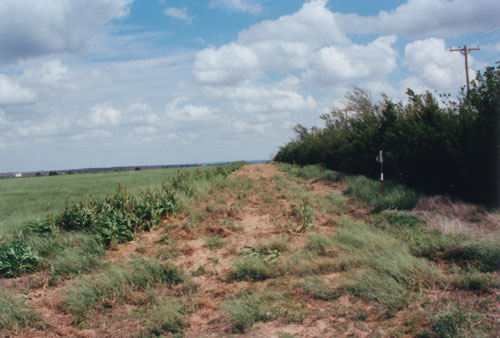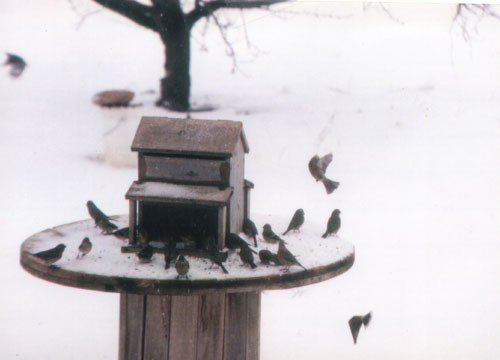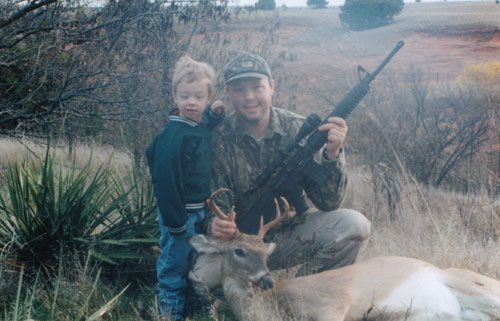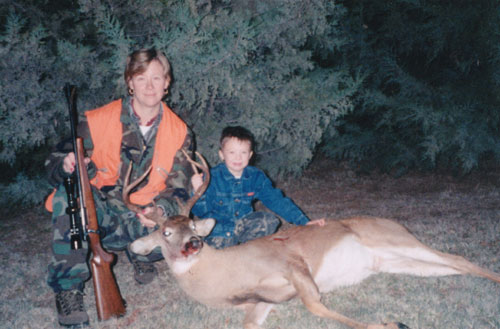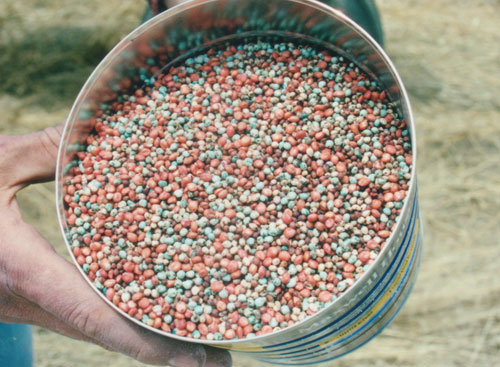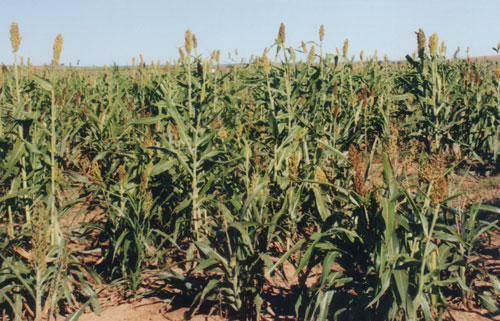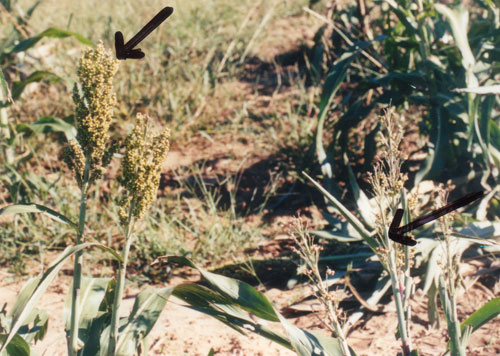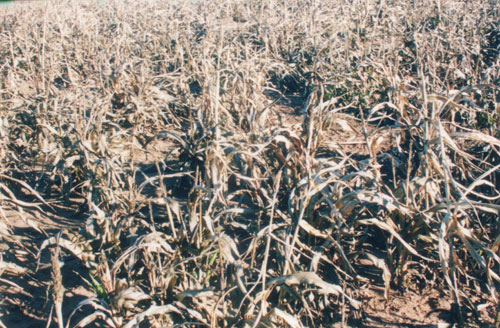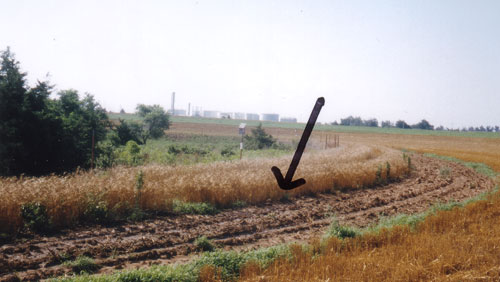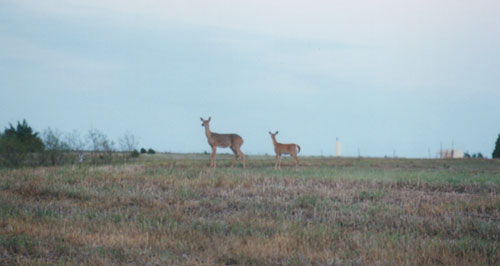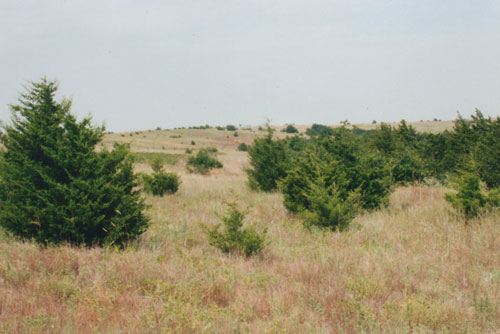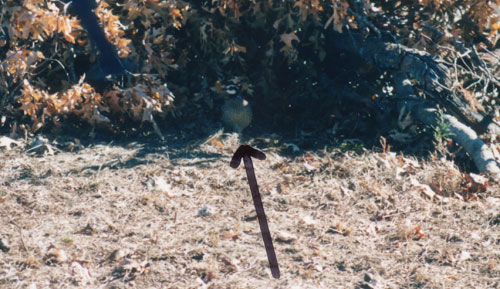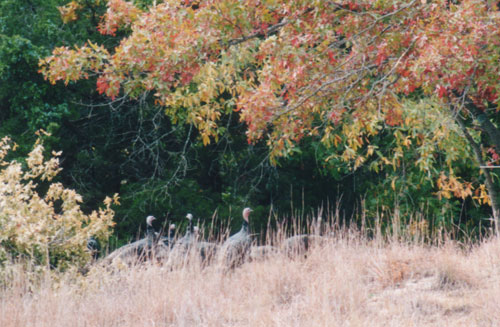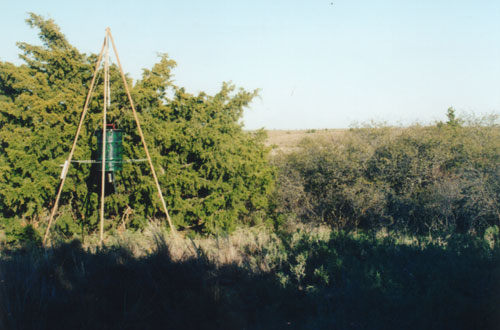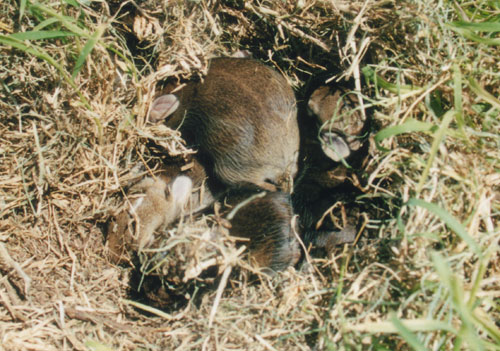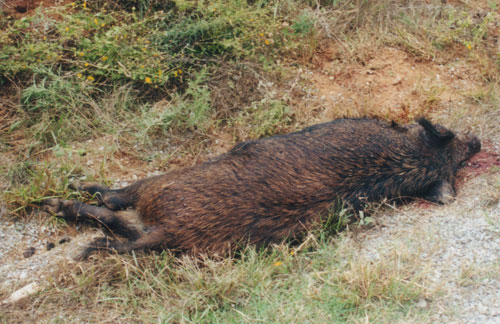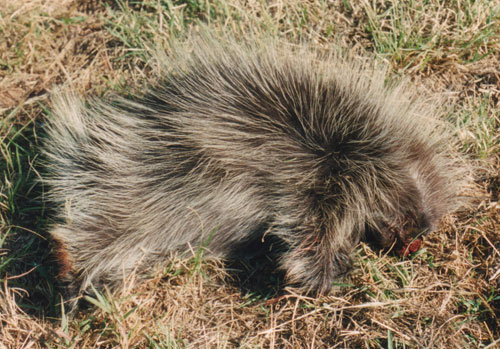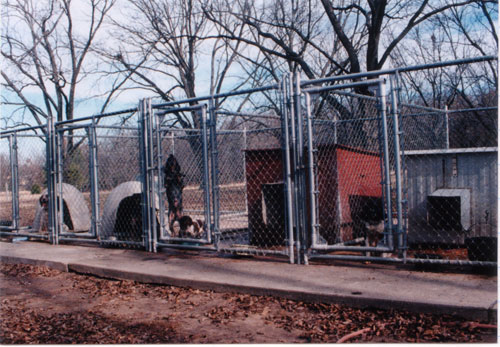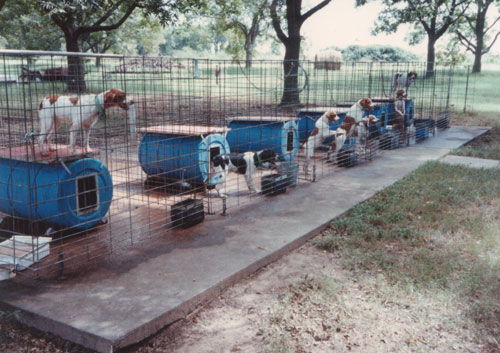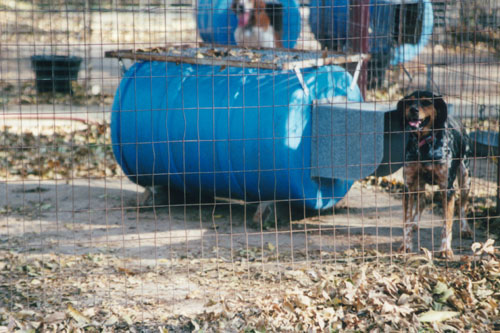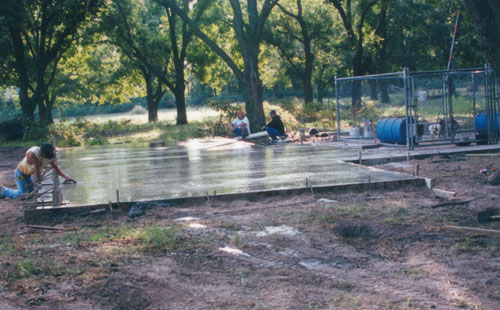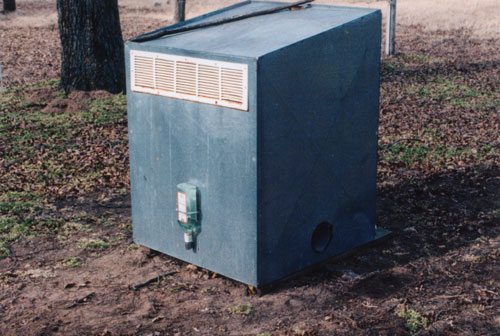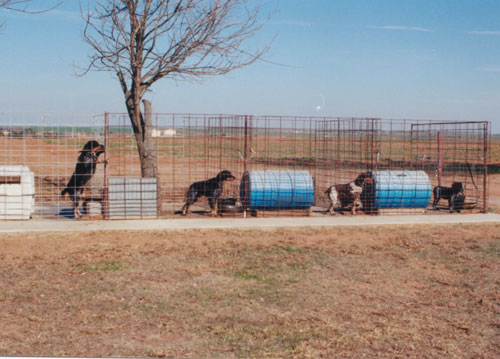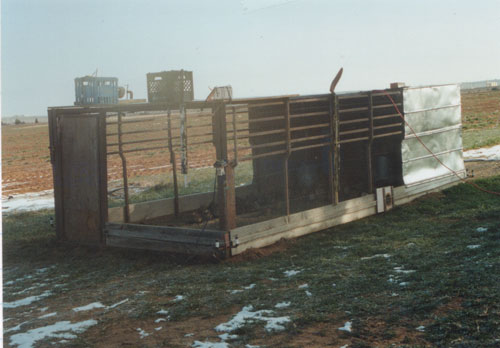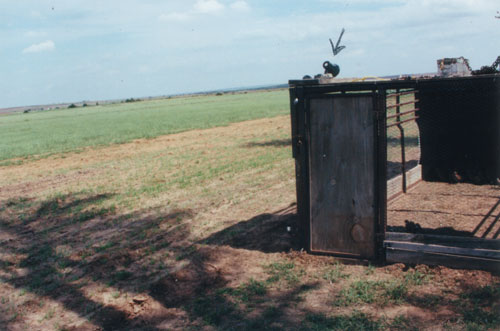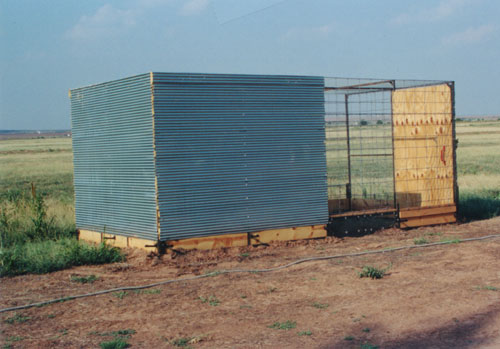|
|
||
|
Our Farm, Recreation/Wildlife Area, Kennels and Facilities
Views of Our Farm Grandpa's 160 acre claim consisted of about 50 to 60 acres of arable (farmable) land and the rest was rangeland and creeks. The rangeland was good buffalo range of mid and tall prairie grasses. The two creeks were perennial spring fed streams with one having the initial spring on his land.
Someone asked Grandpa why he claimed that land and not some "smoother farmland" available. Remember that this settlement was 1900. Little was known of the area potential and water available. The settlers goal was to provide shelter and food for his family and be able to pay his creditors. Grandpa's answer was, "This place had spring fed water year long, tall grass for the cattle, horses, and mules, and enough good land to farm crops and a garden. We did not know if the flat land had water for a well." He was correct. At that time, there was no thoughts of radio, TV, cars, tractors, etc.
A view of a piece of the prairie, spring fed creek to the right, and some quail habitat.
More of the prairie with Sumac bushes and ragweed in the background. Both are quail habitat vegetation. Note the creek and range grass hills in the background.
Note: In our area, good quail habitat is also good whitetail deer, wild turkey, cottontail rabbit, and other wild critter habitat.
This range grass area we call "The Hogback." It is typical of our open native grass area and this is where we do some of our dog work. It is the exact spot of the 2002 French Brittany Gun Dog Association of America meeting T.A.N. tests. Good dog training and released bird hunting area. Wild quail camp at night on the hills and slopes.
My family started over 40 years ago to revegatate old fields that should not be farmed. This area has been planted to range grasses and woody vegetation for conservation and wildlife value. Grazing is rotational about every 2 to 3 years. Deer, quail and turkey use the area.
This range area was a deep gulley about 15 to 20 feet deep. It started from a creek at white man's settlement, and increased after farming and overgrazing by early pioneers. We stabilized the gulley with diversion terraces, grass planting, and woody plantplantings. The area now is stable, harbors various wildlife including quail and deer, and is rotationally grazed about every two to three years to control growth.
Winter Scene: Prairie/Creek Area
Our introduced pasture lands are used for grazing, hay, and as a forage to
graze cattle during native range grazing deferments (rest and recovery).
These lands also serve as "clean" areas for dog work and training.
Branden spreading seed and fertilizer.
Packing the seeded area for Red River Crabgrass establishment.
Spreading lime on Red River Crabgrass seed production field to balance soil acidity.
Overseeding Bermuda grass pasture for rye winter pasture.
Stocker bromegrass nearly ready to harvest for hay or seed.
Cattle grazing crabgrass pasture. The best feed of summer.
Cutting spring oats for hay. Red River Crabgrass will follow oats.
Swathing Red River Crabgrass for seed production and hay.
Threshing Red River Crabgrass for seed. 1972 model 4400 John Deere (left) and 1960 model Gleaner A (right). "Golden Oldies" but still doing the job. Kinda like my bride. R.L. is on the silver Gleaner.
Loading crabgrass hay.
No-tillage planting wheat in crabgrass stubble killed with Roundup herbicide. Excellent conservation and low cost wheat establishment.
No-tillage planted wheat in October. Note: Wildlife food plots in background upper left (arrow).
Stocker Bromegrass from no-tillage planting.
Harvesting wheat planted no-tillage in crabgrass stubble. Excellent crop.
Red River Crabgrass volunteer in wheat stubble after wheat grain combining. Ready for grazing, not yet ready to harvest hay.
Harvesting hay from volunteer Red River Crabgrass in wheat stubble after wheat combine harvest. Excellent cow hay.
Swathing Plains Bluestem for hay. The original seed for this variety came from several countries of the "Old World."
The farm is a real farm, but we greatly enjoy the scenery, wildlife
recreation, and relaxation of the native areas of the farm. Scan down for photographs.
Ottowa pointing Bob White Quail on our prairie.
Winter Scene: Bobcat tracks in snow. An enemy to the Bob White quail.
The red rock areas of the creek banks after a good rain.
Grandchildren Dillon, Sarah, & Hannah fishing for bluegill perch in Great Great Grandpa's pond.
Rock Creek in a gentle rain. Rock Creek is a beautiful, rock bottom creek, that can be walked nearly end to end. Rain flow keeps it flushed clean. On neighboring "used to be" rock bottom creeks, upstream dams limit the natural flow. That coupled with erosion from clean soil farming practices and the oilfield has changed all other neighborhood streams to silted-in, boggy, brushy drainages. Its a waste and a shame on white man's way. Our Rock Creek is a rarity.
Dillon playing in a Rock Creek pool.
Rock Creek offers a lot of fun for the taking. Pat and friend Nancy on "Picture Rock."
Some wildlife habitat above a creek. Bob White Quail, deer, and other critters use the area.
We like most wildlife and have about 30 bluebird houses on the farm. These little bluebird chicks are ready for a bug.
The strip of vegetation to the right is cowpeas, grain sorghum, sudangrass and millet planted at the end of a field for wildlife feed and cover.
We have planted the only shelter-belt tree row (right) that I know of in
our region since the 1930's-1940's. The strips to the left are for
wildlife food/cover plantings. The tree row on the right started harboring
wildlife the year after planting. Numerous kinds of birds, including dove
and quail plus deer, rabbits, and other critters use the area
continuously.
We greatly enjoy winter feeding the "good birds" in the farm house yard. We use only fresh, black oilseed, sunflower seeds. House finch (yellow breast), purple finch, juncos, chickadees, cardinals, meadowlarks, blue jays, Harris sparrows, and others come to dinner.
Deer came to our farm about 1994 in numbers to see. We encourage their present by managing native habitat areas and new plantings to favor them. Son Branden and little Dillon with Branden's first buck harvest on the farm. Quail, deer, and rabbits like much the same habitat.
Daughter-in-law Kathy and young Dillon with Kathy's first deer harvest of a lifetime -- from the farm.
Branden planting grain sorghum mix for wildlife food plot.
The mixture of short and tall types of grain sorghum seed. This mixture of 5 or 6 varieties offers diversity in height, days to maturity, and color. That assures a higher level of success with variable weather.
A thin, but successful, strand of short and tall grain sorghums. Notice some getting ripe and others still green. These sorghums are excellent feed for quail, pheasant, turkey, and deer. Deer start feeding on it at this stage.
Deer are feeding on these sorghum heads (right-arrow). Heads at left-arrow are still too green. Wildlife feeding starts as early as September and proceeds until the grain is gone. Quail and turkey eat on grain trampled to the ground and dropped by deer.
One of the grain sorghum plots deer have used it well and the early freezes have turned it dry and brown. There is still cover for Bob White quail and other wild critters. There is still grain on the ground, for quail, that deer have "spilled." The areas will be worked in the spring and replanted in May or June.
A strip of wheat grain for wildlife (arrow), left along a wildlife habitat area to the left.
Whitetail deer doe and fawn near a wildlife management area (left). Sorghum grain feed plots are unseen to the far left.
Excessive stands of Virginia Juniper (Cedar) infest much of the rangelands in Oklahoma and elsewhere. Since this photograph was taken, we have had most of the cedar cut out of most of the prairie. However, we sculpted the removal of cedar to leave plenty along the creek and raparian edges. We also left strips of cedar connecting areas of the rangeland to create wildlife corridors.
Wild Bob White quail (at arrow) in a brush pile left for wild critter shelter.
Wild turkey feeding along the top edge of a creek where the prairie meets the creek.
We do some wildlife feeding in winter to spring in hopes it will provide better survival to summer. The feeder is elevated above ground to prevent access to wild hogs.
A nest of 8 cottontail rabbit babies.
Wild hogs (escapees or transplants from domestic hogs of recent and long ago times) came to our region many years ago. They started using our farm about 2001. We hate wild hogs! We wish them all dead. They make sewers out of water springs and creeks. They are disastrous on native vegetation and crops. In some regions of the U.S. of A., they have made some native vegetation extinct. They eat much of the same foods needed by quail, turkey, deer, and other critters. There are reports of herds of 25 to 70 hogs in our region. They are hunted and trapped, but they are smart and difficult to eliminate. Apparently, some "hunter" traps wild hogs, or by hogs and release them in other regions to establish new herds. There is a population of wild hogs in over 75% of Oklahoma counties. This is a serious and growing problem.
Porcupines are interesting critters that migrated from the regions west and northwest of Oklahoma. They reached our farm about 2001. We do not like them much more than wild hogs, which we hate. They are injurious to bird dogs from the quills left in the dog upon an encounter. They eat bark of many of the quail, turkey and deer habitat shrubs and this does damage to the habitat.
We hope you enjoy the outdoors, wildlife, and hunting and fishing recreation as much as we do. Have fun!
A Look At Our Kennels
Part of our chain link fence kennel runs with about 89 square feet per run. Note the whelping houses with door awning with also has a swinging door under the awning to use in inclimate weather. The whelp houses can be heated or served with a fan.
We do still have some "cattle panel" pens. The dogs like them just fine. They are not as people friendly as chainlink, but they are greatly lower cost. All of our concrete pads are washed off and the kennel has its own sewer system.
We recently condemned and destroyed these old wire pens that were about 40 years old. Note the homemade doghouse with door awning and porch. Excellent and cost for materials is about $25.00. We have had these houses about 20 years and with little repair.
We added on to the chain link runs in 2002 when we "condemned" the old wire pens.
We do most of our dog training at the farm where there is more space, but
the small Johnny House serves well to hold training quail on our home
acreage. This house can properly house about 12 to 20 quail for catch and
release, and recall. Scan down for photos of the Farm Area Facilities
We always take some of the Bretons to the farm to train and hunt when we go. This farm kennel serves very well for the purpose.
Our Bob White quail portable call back pen at the farm. It can house up to 200 quail. Feed and water are under the covered area.
The callback pen area showing a crabgrass field area to the left and back. We do a lot of young dog work in the grass area. Quail are close enough to call back well. Note the electronic quail call back system on the top left of the pen (arrow).
A new and improved portable quail call back pen. It is 8 ft. x 16 ft. and can house up to 250 Bob White Quail. It is taller than man. |
||



